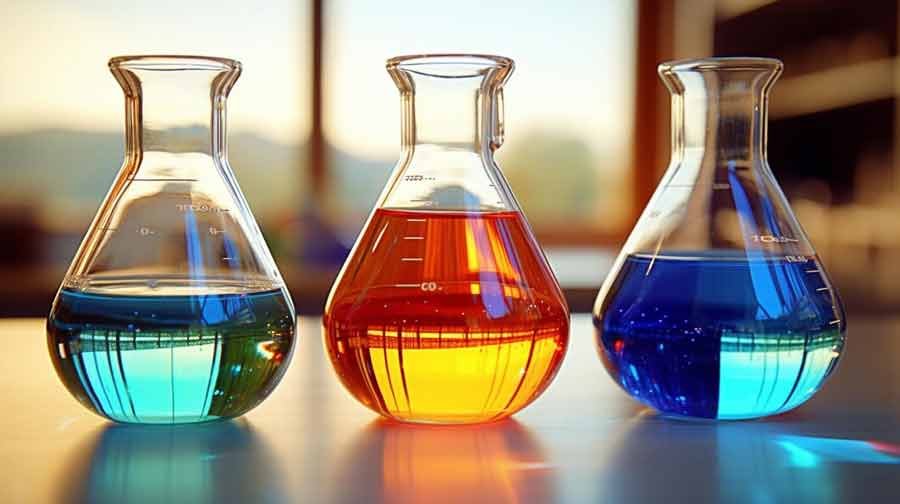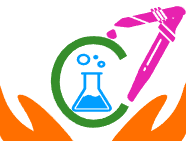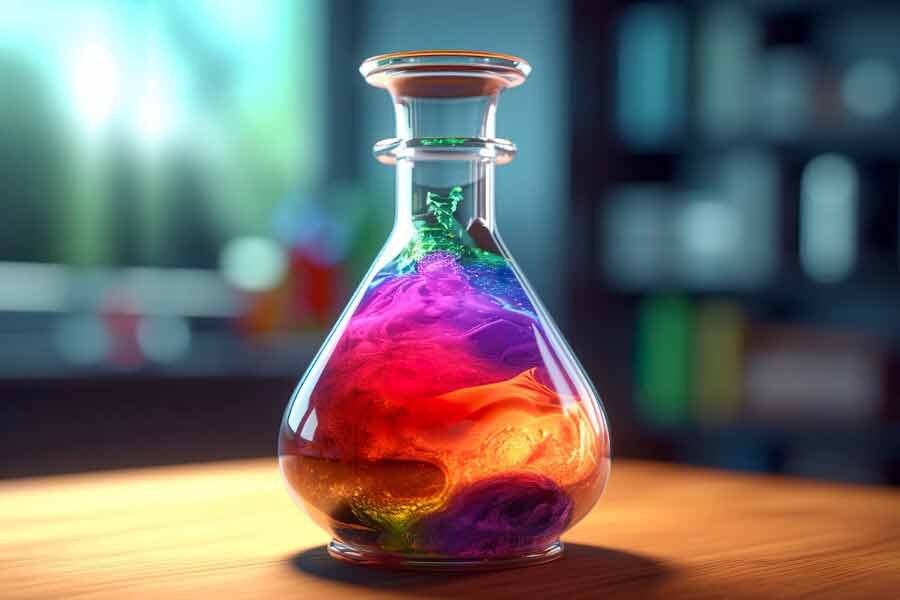Table of Contents
Introduction:
Erlenmeyer flasks, the invention of Emil Erlenmeyer, distinguished by their characteristic conical silhouette, are surpassed only by liquid containers. They represent the essence of exploration and fascination in the field of science education.
Within the scope of this blog post, we embark on an enlightening journey that includes a series of fascinating DIY experiments carefully designed to harness the potential of the Erlenmeyer flask.
Through these fascinating endeavors, our primary objective is not only to enthrall the students’ minds but also to inculcate a deep and abiding love for the pursuit of knowledge, igniting the flame of curiosity and enthusiasm.
DIY experiments
1. Dancing Color: Rainbow Density Column

First things first, let’s gather our materials:
- Erlenmeyer Flask
- Various liquids of different densities (think corn syrup, dish soap, water, and vegetable oil)
- Food coloring in a rainbow spectrum (red, orange, yellow, green, blue, and purple)
- A steady hand and a curious mind
let’s dive into the experiment:
1. Carefully pour the densest liquid into the Erlenmeyer Flask. This will serve as the foundation of our rainbow tower. Corn syrup or honey works well for this layer.
2. Slowly layer the remaining liquids on top of each other, starting with the next densest liquid and working your way up to the least dense. Remember, the key is to pour each layer slowly and gently to prevent mixing.
3. As each layer settles, add a few drops of food coloring to create the vibrant rainbow effect. Watch in awe as the colors spread and blend, creating a visual masterpiece right before your eyes.
4. Once all the layers are in place, step back and admire your handiwork. You’ve just created a stunning rainbow density column!
But wait, the magic doesn’t stop there. Now comes the best part: observing the principles of density and buoyancy in action. Notice how each liquid layer sits on top of the one below it, with the denser liquids sinking to the bottom and the less dense liquids rising to the top. This phenomenon, known as stratification, is a beautiful demonstration of the inherent properties of each substance.
As you gaze upon your Rainbow Density Column, take a moment to appreciate the beauty of science and the endless possibilities it holds. Whether you’re a seasoned scientist or a curious novice, these DIY experiments are sure to ignite your sense of wonder and spark a newfound appreciation for the colorful world around you.
One of the most amazing experiments involving the Erlenmeyer flask is the creation of a rainbow density column. By carefully layering liquids of varying density, such as honey, corn syrup, dish soap, water, and alcohol, students can observe the formation of different layers in the jar, each with its own vibrant color. These experiments teach students about density and demonstrate the principles of stratification and buoyancy in an engaging scenario.
2. Mysterious Volcano: Chemical Eruption
Erlenmeyer flasks are perfect vessels for simulating volcanic eruptions in the classroom. By mixing baking soda and vinegar in a flask, students can observe a bubbling, foaming reaction that mimics the explosive release of gases in a volcanic eruption. This hands-on experiment allows students to study chemical reactions, gas production, and the role of catalysts in a safe and controlled environment.
3. Enchanted Mist: Dry Ice Experiments
By adding dry ice, Erlenmeyer’s flasks become enchanted cauldrons, creating an eerie mist that captures students’ imaginations. By placing a few pieces of dry ice in a flask of hot water, students can observe the rapid sublimation of carbon dioxide gas, creating a dense fog. These DIY experiments not only demonstrate phase changes but also provide a platform for discussing the states of matter and the behavior of gases.
4. Diy Experiments: The Elephant Toothpaste Concept
Erlenmeyer flasks play an important role in the sensational “elephant toothpaste” reaction, a description of exothermic decomposition reactions. By mixing hydrogen peroxide with a catalyst such as potassium iodide or yeast in a flask, students can observe the rapid evolution of oxygen gas and the bursting of foam that resembles squeezed toothpaste. This explosive demonstration not only demonstrates chemical mechanics but also reinforces safety protocols and proper laboratory techniques.
5. Magical Transformation: Crystal Growth
Erlenmeyer flasks also serve as crystallization chambers, allowing students to observe the formation of complex crystal structures over time. By preparing a supersaturated solution of a salt such as potassium alum or copper sulfate and suspending a seed crystal in a flask, students can observe the gradual growth of the crystal as the solution is cooled and evaporated. These DIY experiments not only explore the concepts of solubility and saturation but also develop patience and observation skills as students observe the growth of their crystals.
Conclusion:
Erlenmeyer flasks transcend their material existence as mere glassware; they serve as conduits to an expansive universe of scientific inquiry and revelation.
The transformative potential of these iconic vessels is palpably evident through a myriad of engaging DIY experiments, such as the mesmerizing rainbow density column, the awe-inspiring chemical eruptions, the mystical allure of dry ice fog, the explosive spectacle of the elephant toothpaste reaction, and the enchanting process of crystal growing.
These hands-on experiences not only offer students a tactile connection to scientific principles but also afford them the opportunity to immerse themselves in the sheer wonder of discovery. By leveraging the versatility of Erlenmeyer flasks, educators embark on a journey to unlock the boundless potential of their students’ minds, igniting a passion for inquiry that resonates far beyond the confines of the classroom.
Through the alchemy of curiosity, creativity, and scientific exploration, educators become catalysts for inspiration, nurturing a lifelong commitment to the pursuit of knowledge and understanding in the hearts and minds of their students.”

